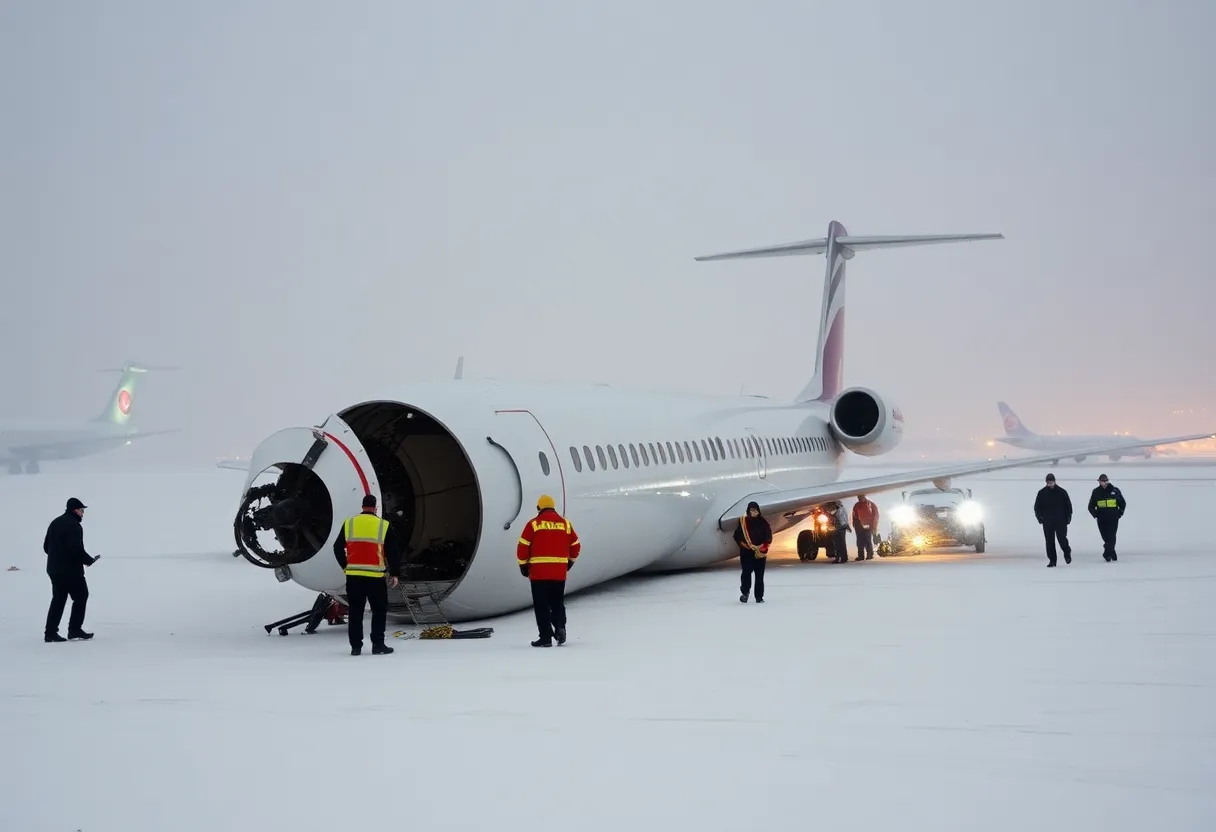

Delta Air Lines Flight 4819 after crash landing at Toronto Pearson International Airport, all passengers survived.
On February 17, 2025, Delta Air Lines Flight 4819 faced a dramatic crash landing at Toronto Pearson International Airport due to severe weather conditions. Despite flipping over and bursting into flames, all 80 people on board survived, although 21 sustained injuries. The quick response from emergency crews ensured a miraculous escape, while investigators assess the contributing factors behind the incident amidst ongoing airport disruptions caused by a winter storm.
In a dramatic turn of events, a Delta Air Lines Flight 4819 from Minneapolis attempted to land at Toronto Pearson International Airport on February 17, 2025, only to crash and flip over on the runway. The incident occurred at around 2:15 p.m., and while it was a harrowing experience for all involved, incredibly, all 80 people on board survived.
The aircraft, a Bombardier CRJ900 operated by Endeavor Air—Delta’s regional partner—was facing some pretty tough weather conditions during its landing attempt. With strong winds clocking in at about 29 mph, and gusts hitting a striking 38 mph, the plane was battling much more than just the usual turbulence. To make matters worse, there was drifting snow across the runway, contributing to a challenging landing scenario.
As the plane came in to land on a snow-covered runway, things took a turn for the worse. Skidding sideways, the flight ultimately lost its right wing and ended up on its back, leading to much damage to the aircraft. Eyewitnesses described a shocking scene as the plane flipped over and burst into flames upon impact. Passengers who had unbuckled their seat belts reported being tossed around as if they had crashed onto the ceiling of the cabin.
Emergency responders quickly jumped into action, evacuating passengers from the overturned plane. Thankfully, all 76 passengers and 4 crew members were able to escape, although 21 individuals sustained injuries. Most of these injuries were minor, but two people were classified as being in critical condition—though their injuries were not life-threatening.
The injuries varied widely among the survivors, including back sprains, head injuries, anxiety, and nausea, which were thought to stem from exposure to fuel. It’s a stark reminder of how unpredictable flying can be, especially when facing inclement weather conditions.
This dramatic incident not only shocked those aboard the flight but also had ripple effects throughout Toronto Pearson International Airport. The airport was already grappling with flight delays and cancellations due to a severe winter storm, and this accident certainly made things more complicated. Passengers were hastily transported to the nearby Sheraton Gateway Hotel for safety as investigations commenced.
As investigators delve into the details of the crash, the Transportation Safety Board of Canada is taking the lead, receiving help from both the U.S. National Transportation Safety Board and the Federal Aviation Administration. Initial reports suggest that there were no significant operational anomalies noted by the control tower during the flight’s approach. However, pilots were advised of possible airflow bumps before attempting to land.
The scene at the airport wasn’t the best, with blowing snow reportedly reducing visibility to around 6 miles at the time of the accident. Investigators will be scrutinizing every aspect, including weather conditions, pilot actions, and the aircraft’s landing gear status, to figure out what went wrong.
This unfortunate incident serves as a reminder of just how quickly things can change during air travel, especially in less-than-ideal weather conditions. Thankfully, the quick actions of the crew and emergency responders ensured that everyone made it out safely, marking a miraculous escape for those involved.
News Summary Ammar Abdulmajid-Mohamed Said, a 19-year-old from Wayne County, has been arrested for allegedly…
News Summary A luxurious lakeside estate at 82 Chateaux Du Lac in Fenton, MI has…
News Summary Michigan will distribute about $34 million to 23,000 unemployment claimants following a class-action…
News Summary Mary Alison Turner, a dedicated educator and cherished friend from Madison, Indiana, has…
News Summary A tragic explosion occurred outside the American Reproductive Centers fertility clinic in Palm…
News Summary The NJ Transit strike has entered its second day, creating challenges for commuters…